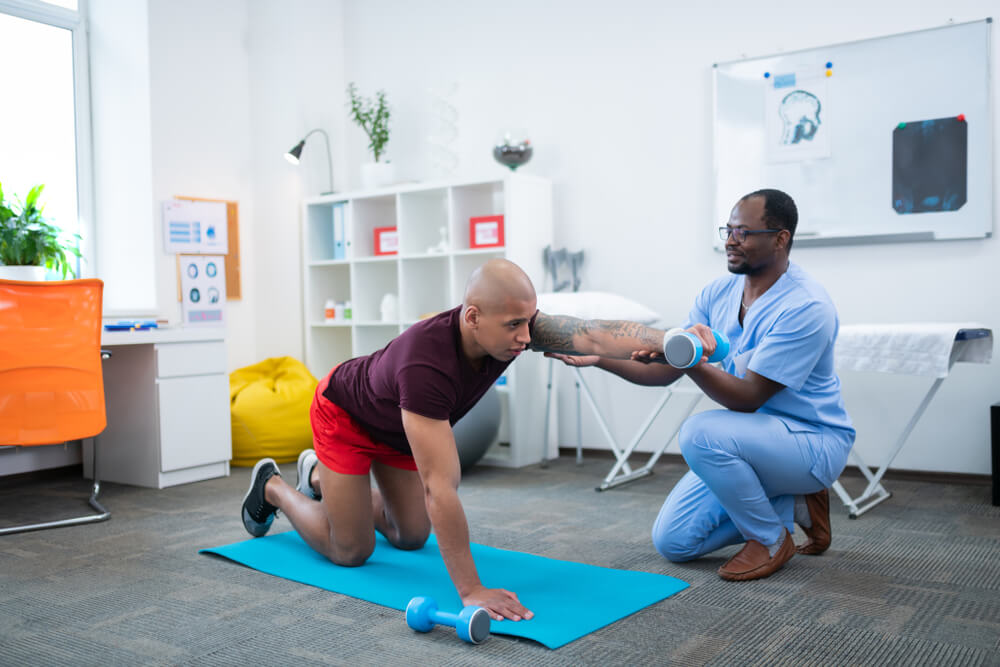Sciatica can be caused by a number of underlying conditions — all of which can be helped by pursuing a course of physical therapy. The term “sciatica” actually refers to a group of symptoms caused by compression or irritation of the long and wide sciatic nerve, which runs from the lower back all the way down both legs. People diagnosed with this condition typically suffer from leg pain, shooting pains in the hips and buttocks, muscle weakness, and tingling and numbness in the extremities.
Because this nerve provides so much sensory and motor information to the lower body, sciatic nerve compression can be seriously debilitating and take you away from the people and activities you enjoy. Whether the cause is a strained muscle, a lower spine condition or pregnancy, physical therapists have highly specialized knowledge and training to help relieve sciatica.
At Specialists in Sports and Orthopedic Rehabilitation, we’re passionate about patient education. We’ve created the following easy-to-understand article to help you gain an increased awareness of physical therapy for sciatica pain.
How physical therapists treat sciatica pain
The exact course of treatment will depend on the root cause of nerve compression. For example, someone with a lumbar herniated disc will have different needs than if sciatica pain is related to pregnancy. However, the overall goals of physical therapy should remain the same — to restore core functioning and relieve pain while decreasing the chances of reinjury in the long term. Some of the fundamental techniques to accomplish this for sciatica include:
- Therapeutic strengthening exercises — One of the best ways to relieve pressure on the sciatic nerve is to strengthen the supporting muscles around it. Particularly in the spine, stronger muscles can help support the vertebrae and reduce stress on the discs and nerves.
- Manual therapy — Specific techniques such as soft tissue mobilization and trigger point therapy can help relax tense muscles and increase range of motion in the affected area.
- Posture training — It’s easy to overlook, but poor posture can unevenly distribute weight and put added pressure on the sciatic nerve. By learning proper posture when standing, sitting, walking, sleeping and performing other daily activities, you can potentially ease your sciatica pain.
It’s important to stay patient and expect some degree of trial and error as you attempt sciatica treatment. You can help your therapist, and yourself, by keeping a detailed journal of your symptoms and the treatment options that seem to offer the most relief.
Reach out to SSOR for sciatica relief today
When you come to one of our facilities, you can expect the highest level of compassionate care from our highly trained therapists. Our mission is to understand your needs and develop a comprehensive treatment plan that is right for your lifestyle.
Don’t live another day with sciatica pain. Contact us today to start your treatment journey and schedule your initial appointment.

